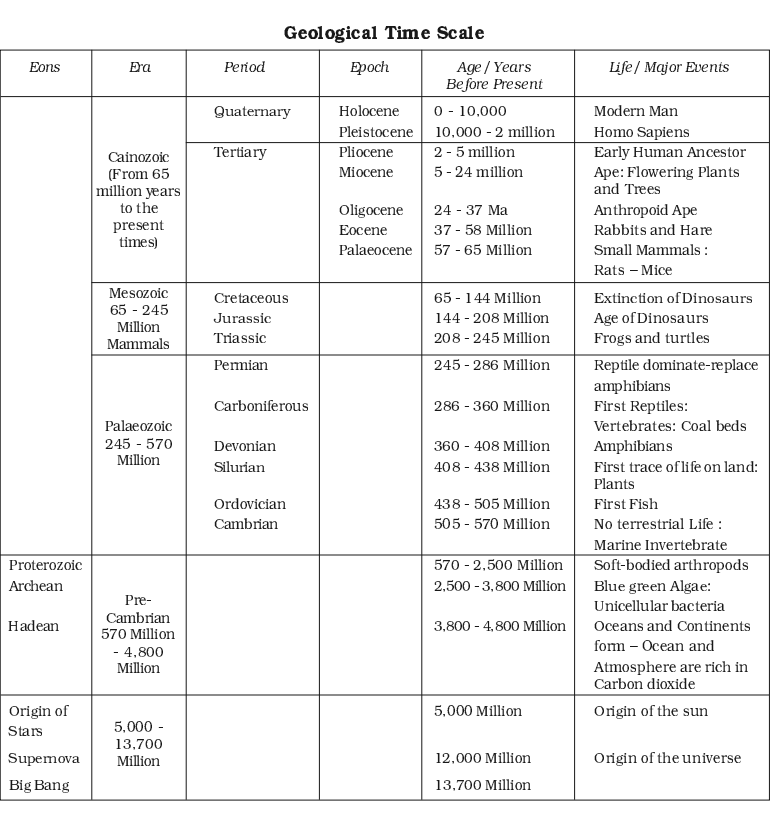Important Facts For Prelims
Earth Habitable 4 Billion Years Ago
- 07 Jun 2024
- 5 min read
Why in News?
Recently, analyses of ancient rocks and minerals revealed that Earth may have had the necessary conditions to support life around 600 million years after its formation, with fresh water and dry land present as far back as 4 billion years ago.
What are the Key Highlights of the Recent Study?
- Water Cycle and Life Emergence: The interaction between freshwater and land, referred to as the water cycle might have created conditions conducive to life.
- This interaction was previously believed to have started around 3.5 billion years ago based on fossil evidence.
- A study of oxygen isotopes in ancient rocks reveals the origins of Earth's water cycle.
- It suggests fresh water and land interactions occurred several kilometres below the Earth’s surface, challenging the theory that Earth was completely covered by ocean four billion years ago.
- Implications for Early Life: These findings indicate that the conditions for life to flourish existed relatively early in Earth's history.
What are the Key Facts About Origin of Earth?
- Age of Earth: While Earth is estimated to be around 4.5 billion years old, the study suggests that fresh water and dry land were present as far back as 4 billion years ago.
- Theories Related to the Origin of Earth:
- Nebular Hypothesis: It was given by Immanuel Kant and revised by Laplace.
- It considered that the planets were formed out of a cloud of material associated with a youthful sun, which was slowly rotating.
- In 1950, Otto Schmidt in Russia and Carl Weizascar in Germany revised the nebular hypothesis.
- They considered that the sun was surrounded by a solar nebula containing mostly hydrogen, helium, and dust.
- The friction and collision of particles led to the formation of a disk-shaped cloud and the planets were formed through the process of accretion.
- Big Bang Theory: It was given by Edwin Hubble, in 1920. It is the idea that the universe began as just a single point, then expanded and stretched to grow as large as it is right now.
- Nebular Hypothesis: It was given by Immanuel Kant and revised by Laplace.
- Evolution Of The Earth:
- Formation of the Lithosphere: Initially, Earth was extremely hot and volatile. As it cooled, heavier elements like iron sank towards the centre, while lighter materials rose to the surface, forming the crust.
- Evolution of Earth's Atmosphere in Three Stages.
- First, the loss of primordial atmosphere.
- Second, the hot interior of the earth contributed to the evolution of the atmosphere. The process through which the gases were outpoured from the interior is called degassing.
- Finally, the atmosphere was modified by the living world through the process of photosynthesis and volcanic activity.
- Development of the Hydrosphere: As Earth cooled, water vapour in the atmosphere condensed and fell as rain, filling the planet's depressions to form oceans.
- Impact of Biological Processes on Atmosphere: Photosynthesis began to flood the atmosphere with oxygen paving the way for more complex life forms that rely on oxygen.
- Origin of Life: A kind of chemical reaction, which first generated complex organic molecules and assembled them.
UPSC Civil Services Examination, Previous Year Question (PYQ)
Prelims:
Q. Which of the following pairs is/are correctly matched? (2008)
Theory/Law Associated Scientist
- Continental Drift : Edwin Hubble
- Expansion of Universe : Alfred Wegener
- Photoelectric Effect : Albert Einstein
Select the correct answer using the code given below:
(a) 2 and 3 only
(b) 3 only
(c) 2 only
(d) 1 only
Ans: (b)








